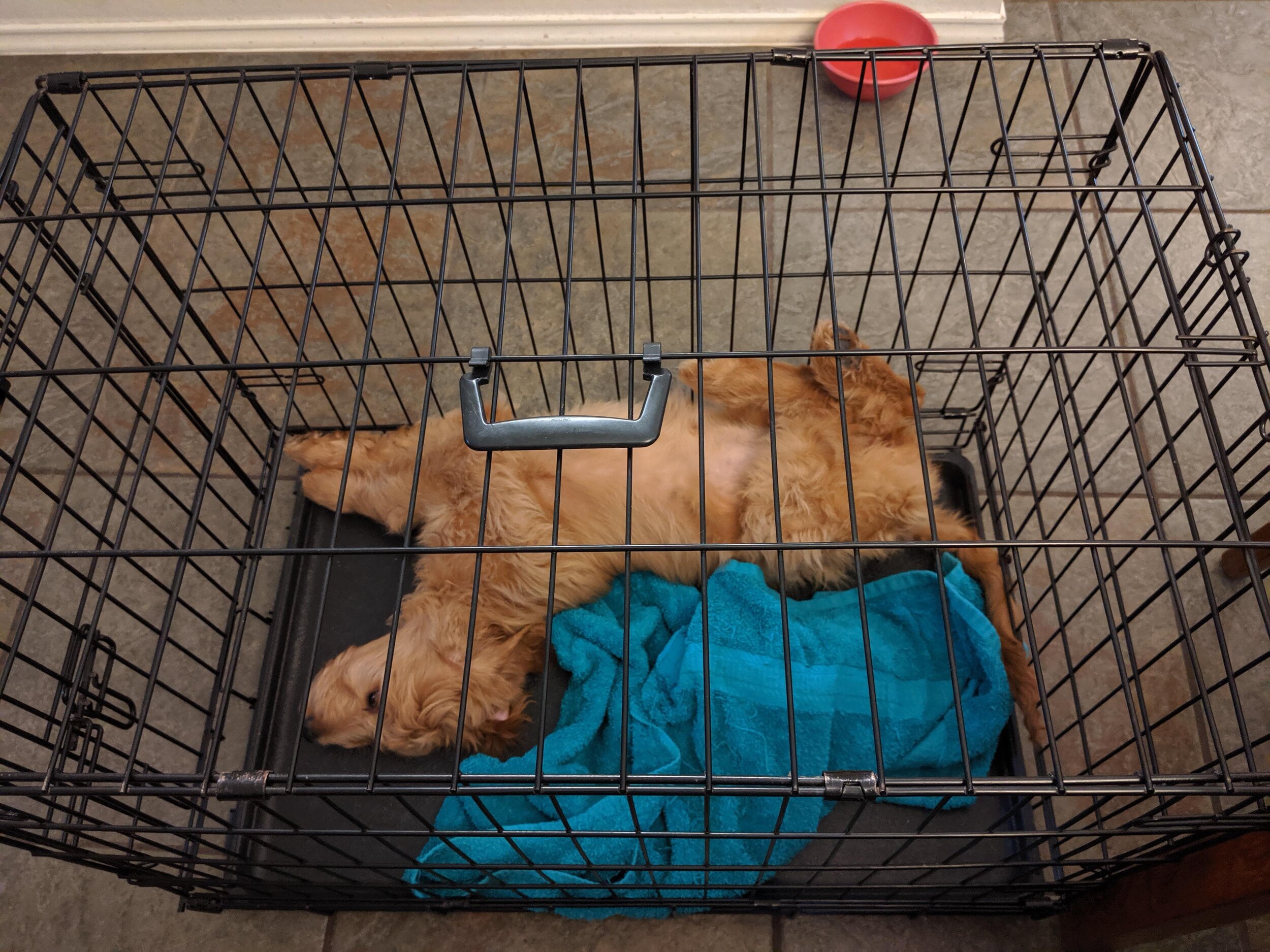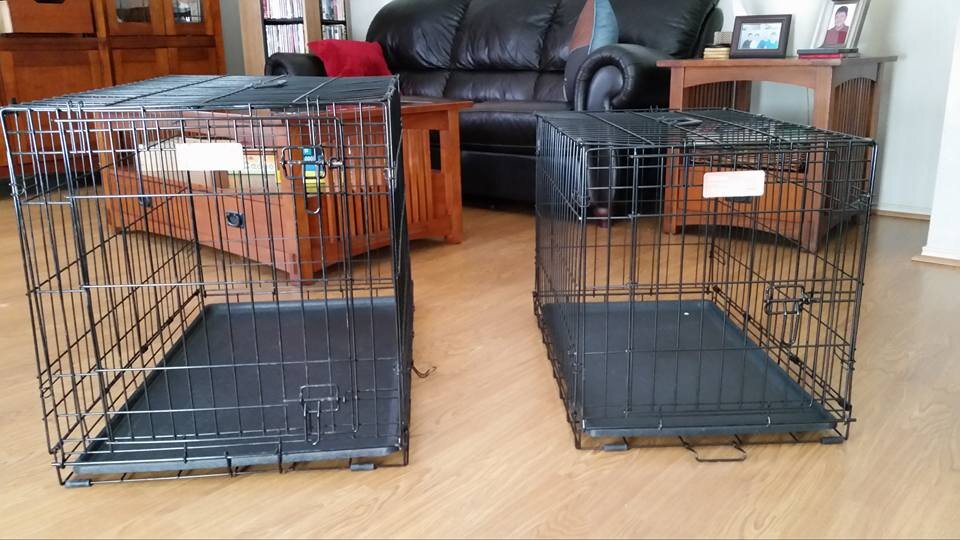Crate Training A Puppy
Welcome home, Puppy!
The Holidays are a popular time to bring puppies home. Over the next several weeks the Koinonia blog is running a Puppy series to help you with the pesky puppy problems that come with the cute faces.
It’s hard to pick just one thing for people to know ASAP after bringing a puppy home. Housetraining? Biting? Socialization? Basic obedience? It feels like everything needs attention at once.
As exciting as puppies are, there comes a time (and it comes soon) when you need a break. Either you need to get kids from school, or pick up groceries, or take a shower, or just take a nap! Not only do you need breaks, but your pup needs breaks them too—a lot of them.
To help you and pup get the refreshing breaks you need, let’s get into Puppy Crate Training.
Should Puppies Be Crate Trained?
As a general rule, I am absolutely in favor of crate training dogs. I believe humane crating is a first-rate option for keeping dogs safe and the house intact when you can’t supervise.
Even if you don’t plan on crating long-term, just remember the future is uncertain: 6 weeks of strict crate rest following his ACL repair is not a fun time to teach your dog to enjoy a crate. It’s actually kinder to crate train before the dog needs it.
What Does it Mean to be Crate Trained?
A dog who is “crate trained” willingly enters the crate (no pushing or shoving needed) and stays quiet when shut inside.
Quiet is important not just because barking is super annoying and makes it impossible to use the crate, but because quiet generally means the dog is relaxed and comfortable.
What Type of Crate?
The wire collapsible crates are popular and work just fine for most needs. Note that the larger sizes are heavy and unwieldy—I have a hard time carrying mine by myself.
Crate Training 101
There are two main parts of crate training:
Making it Happy
Barking is one of the biggest problems associated with using a crate, but you can reduce the likelihood of barking by making the crate a happy place.
Feed at least one meal per day in the crate. Most dogs are pretty simple: food makes them happy. Regularly feeding in the crate makes it, “that fun place where I get to eat!” and not, “that horrible place where I get left alone.”
The Puppy Pacifier is great for crate training! Read more about one of my top tips for puppies.
Prepping for Crating
The best way to avoid vocalization is to ensure your pup is very ready to sleep (if not actually asleep!) before leaving him alone in the crate. Sleeping puppies do not bark.
How do you put a puppy to sleep?
Appropriate physical and mental exercise. What you do before crate-time is just as important as what you do when the puppy’s in the crate. Actively interacting with your pup in training and playtime ensures that his energy level is low enough for sleep. Activities done when he’s awake are prep for the next round of sleep.
Drip feed. Drip Feeding helps puppies relax enough in the crate to fall asleep. With your puppy inside the crate, sit quietly nearby and periodically drop treats inside. The goal is to keep puppy calm long enough for him to realize he’s quite sleepy and drop off.


